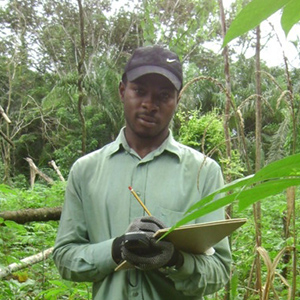Tetracarpidium conophorum is a vine of the Euphorbiaceae family producing edible fruits and presenting a wide distribution across West and Central Africa. The climber is considered as a multipurpose tree that provides non timber forest products (NTFP’s), but also full of properties. Therefore nuts can be transformed into powder to obtain a proteinic food supply, processing nuts gives an hypocholesterolemia and hypotriglyceridemia oil usually used in traditional pharmacopoeia to cure rheumatism, abscess, etc. Nuts can be also eaten raw or boil as tonic kola while bark is used for medicinal purpose. Regarding all this, lack of knowledge on the socioeconomic and ecological potentialities of the wine is a hindrance for sustainable management and improvement of household income for local populations involving the value chain. The objective of the study is to assess the socio-economic and ecological potentialities of the vine’s nuts in the Mbam and Inoubou region of Cameroon. Ethnobotanical and quantitative ecological methods will be used. Passed studies showed that the specie is commonly important for the local populations as well as theirs organs are more commercialized even locally and sub regionally. Trading process will be more helpful so as it’s contribute to improve the local farmers or producers livelihoods. Surveys conducted revealed also that the wine associated with some others species in agroforests can actively contribute to fight against climate change through the carbon sequestration process. With those findings, some efforts should be made by stakeholders and people involved in the value chain of the conophor nuts sheet to promote its new products and share more information’s.
Keywords: Tetracarpidium conophorum, NTFP’s, potentialities, local communities
